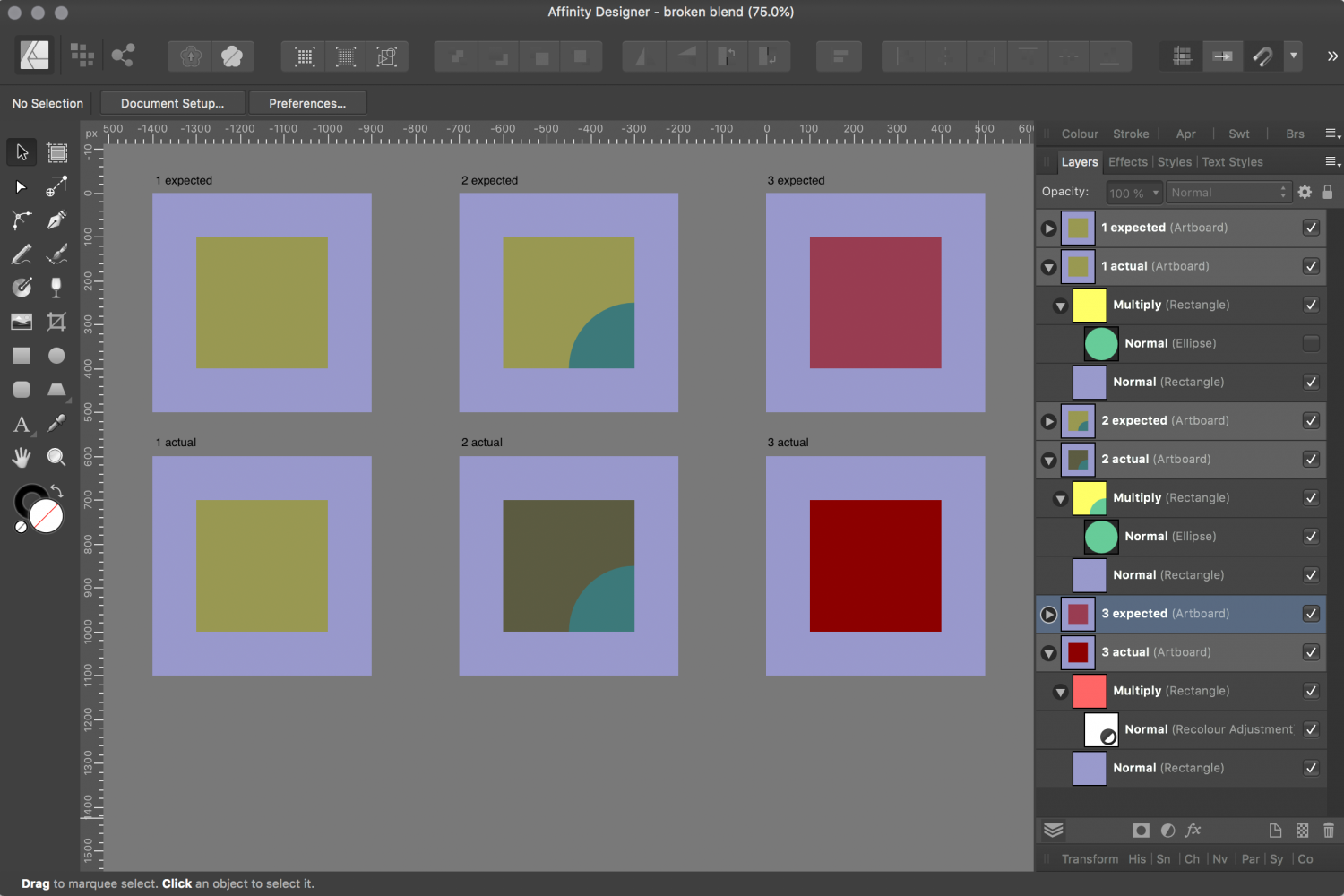Search the Community
Showing results for tags 'afd-4049'.
-
I might understand blend mode wrong. But I always believe when we set white pixel's blend mode to "multiply" they disappears. At least this is how photoshop handles it. I found this explaining multiply mode in photoshop https://theeagerlearner.com/your-big-friendly-guide-to-layer-blend-modes/ "Multiply – This is what we use most often when we want to make things darker. White is invisible, black is opaque & the grey is making things darker." While on Affinity Designer, multiply "always producing a darker value." https://affinity.help/designer/en-US.lproj/index.html?page=pages/Layers/layerBlendModes.html?title=Layer%20blending See https://imgur.com/a/fgCWOEC, left shadow has blend mode normal, and right shadow has blend mode multiply. The white pixel also makes the ground darker.
-

[1.8.3 and earlier] Broken blending of clipping object
lepr posted a topic in V1 Bugs found on macOS
AP, AD and APub 1.8.3 and earlier macOS 10.13.6 A vector object is incorrectly rendered (to the view and to exported image) when the object contains a clip-nested child: the app does an extra blend of the object with the background. object with no child expected result: object blend with background actual result: object blend with background parent with clipped child expected result: (child blendC with parent) blendP with background actual result: (child blendC with (parent blendP with background)) blendP with background

